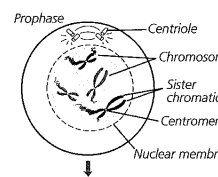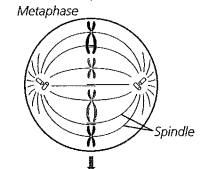
Cell growth and Reproduction
Objectives:
1. Describe the three main stages of the cell cycle
2. Describe how the process of DNA replication results in the transmission and/or conservation of genetic information.
3. Compare the processes and outcomes of mitotic and meiotic nuclear divisions
Essential Questions:
1. What are the three main stages of the cell cycle?
2. How does the process of DNA replication result in the transmission and/or conservation of genetic information?
Key Terms:
Interphase- divided into 3 stages, the cell grows, it replicates its DNA in the S stage and prepares to divide in the G2 stage.
Cell Cycle- Describes the stages of a cell’s life
S Phase- genetic material in cell doubles
Cytokinesis- final stage in cell cycle, cytoplasm divides in two
DNA Replication- Produces an exact copy of genetic material in a chromosome
Mitosis- Duplicating the nucleus of a Eukaryotic cell. It is divided into four main phases which are: Prophase, Metaphase, Anaphase, and Telophase
Prophase-Nuclear membrane starts to break down, the chromosomes begin to get smaller because the DNA molecules coil up
Metaphase- The centrioles produce structures called spindles which attach to the centromeres on the sister chromatids
Anaphase- As the spindles shorten they pull the sister chromatids apart
Telophase- New nuclear membranes form around the newly separated chromosomes. As the chromosomes unwind they begin to get longer and thinner
A cell cycle also referred to as Cell division are the stages that occur in the cell that lead to division and duplication of cells. During the cell cycle, a cell passes through 3 stages which are Interphase, Nuclear division, and Cytokinesis. Interphase (which is the longest of the three) is divided into three stages which are the G1 stage where the cell grows, the S stage where the cell replicates its DNA, and the G2 stage where the cell prepares to divide. Mitosis is the form of nuclear division that produces most cells of the body. During Mitosis the nucleus is replicated and the chromosome number remains the same in the two daughter cells that form. During the last stage of the cell cycle which is cytokinesis, the original parent cells split into two daughter cells. the cytoplasm splits into two. During cytokinesis, the cytoplasm splits into two. At the beginning of DNA replication (which is carried out by enzymes), an enzyme attaches to a site on the double-stranded DNA and begins to separate the DNA. The enzyme DNA polymerase is able to pair free nucleotides with the nucleotides in the strand. The complementary base pairing rules for pairing the nucleotides are A pairs with T and C pairs with G. The rules make sure that a complete copy of the DNA can be produced from either strand of the original DNA. Once the S and G2 phase are complete the cell is ready to undergo Mitosis. Mitosis is divided into four phases which are: Prophase where the nuclear membrane starts to break down and the chromosomes get smaller, Metaphase, where the spindles attach to the centromeres on the sister chromatids, Anaphase where the spindles shorten and the sister chromatids, are pulled apart, and Telophase where new nuclear membranes form around the newly separated chromosomes.
Multiple Choice and Open-Ended Questions
1. During what phase does the Nuclear membrane break down and the chromosomes start to get smaller as the DNA molecules coil up?
A.Metaphase
B.Anaphase
C.Prophase
D.Telophase
2. What are the complementary base pairing rules?
A. A with C and T with G
B. A with T and C with G
C. A with G and C with T
D. A with T and G with T
3. What is the first phase of Mitosis?
A.Prophase
B.Cytokinesis
C.Telophase
D.Anaphase
4. What is the process of Interphase?
______________________________________________________________________________
______________________________________________________________________________
______________________________________________________________________________
5. Describe the purpose of the three main stages in a cell cycle
______________________________________________________________________________
______________________________________________________________________________
______________________________________________________________________________






